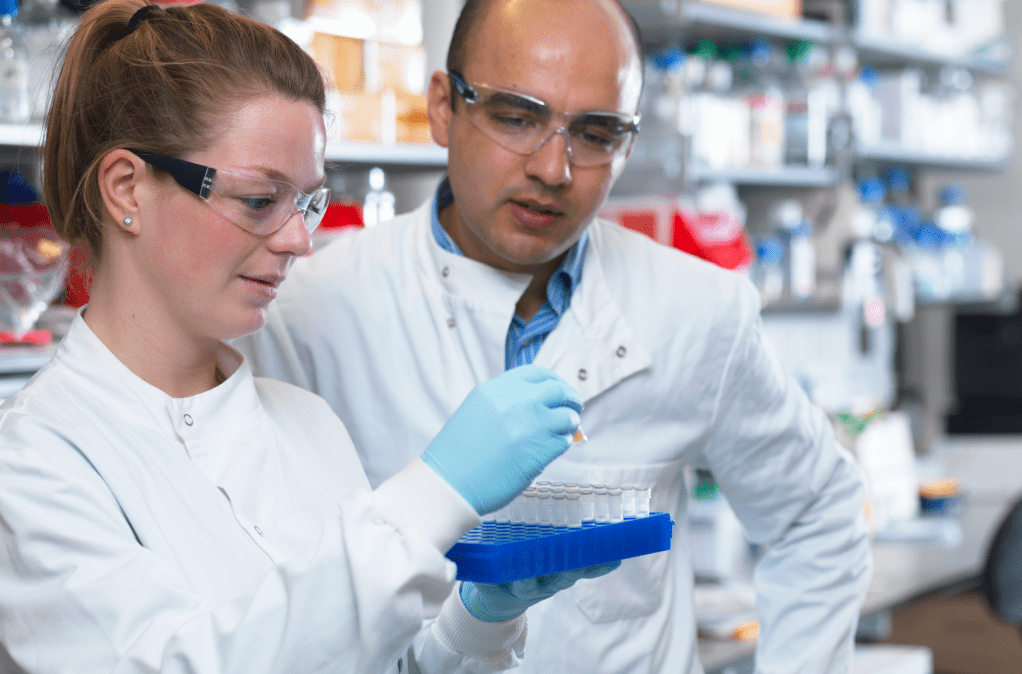The state of the supplement industry
[This article, “A New Generation Of Super Efficient Supplements” was originally published in HealthXWire]
While the use of dietary supplements has expanded greatly in the last few decades, and the variety of available products in the consumer marketplace is seemingly endless, very little of substance or significance has actually changed in this high-growth industry.
Technology has advanced so rapidly in other industries in the recent years that most of us would logically assume that the fueling of our bodies would be the subject of similar advances. But the supplement industry (stifling a yawn here), generally speaking, is sadly lacking in serious innovation.
In a market as competitive and saturated as the supplement industry, most producers simply compete for market share and differentiate themselves through some combination of aggressive marketing and branding, extending product shelf life, reducing the cost of ingredients and packaging, and exploiting economies of scale brought about using production processes that employ increasingly efficient technology.
Very few companies in the industry focus on actually improving products in ways that help the consumer to derive greater benefits and to ultimately become healthier.

The real key for supplements: Bioavailability
Much of the active ingredients in the supplements that you ingest never quite make it to the parts of your body and brain where they can do their work. It all comes down to a concept called bioavailability, which, simply defined, is the amount of active ingredient in a supplement that is fully absorbable in the GI (gastrointestinal) tract.
This is expressed as a fraction or percent which compares the amount of a bioactive ingredient consumed with how much of it is actually absorbed into the bloodstream. Keep this in mind, because everything that you swallow which isn’t absorbed through the GI tract into the bloodstream is unusable by your body and of no benefit; this surplus is literally waste, and it will eventually be excreted.
This is, without a doubt, one of the most important factors when it comes to the effectiveness of your supplements. You may, in theory, have the perfect supplementation regimen, but if your body cannot actually absorb and utilize the essential nutrients, your carefully researched and customized protocol will, unfortunately be just a waste of time and money.
Of course, the right ingredients matter, but the major deciding factor will ultimately be bioavailability. But determining which is the optimal supplement for you as an individual in terms of bioavailability can be a tricky and difficult task.
It’s hard to make head-to-head comparisons
There are a number of factors that can affect the bioavailability of any particular supplement that you might be considering. Things like solubility, retention time, stability in the gut, food already in the gut, time of consumption and genetics can all play a part. This list of variables makes it virtually impossible for manufacturers to accurately determine the efficacy of any given product for any one individual.
The solution from many manufacturers has been to simply increase the advertised amount of an active ingredient. This approach relies on the hope that consumers will see greater amounts of what they want and choose a product accordingly, irrespective of how much of that product they will actually be able to absorb and utilize.
From a marketing perspective, this has historically worked, but as consumers are becoming better informed and more sophisticated, they are increasingly asking more questions and doing more research.
The supplements particle size problem
Solubility (the ability of a substance to dissolve fully in either water or oil) is a prerequisite for bioavailability and absorption. Very small, soluble particles are able to solubilize in solution (such as the digestive fluids in your stomach). But the size of the insoluble particles in the most pills, powders and tablets, is (pun intended) the biggest problem.
Trying to get your body to absorb hard particles that are too big is like trying to push rocks through a fine mesh sieve. It simply doesn’t work, and as a predictable result, many supplements have incredibly low bioavailability ratios.
In laboratory tests, particles in many common supplements were often 10X to 100X too large to be absorbed effectively by the body. This means that even if your body is able to break down the pill itself the contents are not likely going to be absorbed; rather they will just move through your GI tract and intestines without actually imparting the essential nutrients into your body’s bloodstream.

A logical solution
Numerous industry journal articles have indicated that reducing the size of particles and thereby making them more readily soluble makes them easier to digest and allows for a higher level bioavailability. The highest possible degree of solubility is crucial because your body often needs to combine several different materials together in order to make use of them.
Increasing solubility means that it will be easier for your body to make that combination happen.
Micronutrients are most commonly soluble with either fats or in water. This becomes a problem with powder supplements as they tend to mix poorly with other substances. This is due, in large part, to the practice, on the part of many manufacturers, of treating these powders with all sorts of chemical agents specifically to prevent them from binding to other substances.
These agents are not without purpose; for the most part they are used to prevent caking of ingredients or to prevent excessive absorption of the water which is ordinarily present in environmental moisture (hydration).
These chemicals do prevent you from opening the tub to find a giant cake or pool of what used to be powder. But also prevent it from combining with water when you actually need it to. This is why with many supplements, when you put them in water you will see the particles floating around. This is because they haven’t actually solubilized in the water. The water is just separating those little undissolved particles, to no useful end. Making the right selection
Having heard all of this, you’re probably worried that all of those dry supplements you’ve been taking are just being put through your body, instead of into your body because the particles are too big, too dry, and have low bioavailability. Your concerns are not unfounded, and will require action on your part in order to have them addressed.
The biggest step forward in optimizing your supplement regimen is going to be paying closer attention to the form of your supplements, and you’ll have to do some research in order to discover the best path method for increasing your body’s micronutrient absorption.
There exists a variety of ways in which some companies in the industry are actually meaningfully increasing the absorption of their supplement products by their users. Some of these companies are using specialized bio compounds, while companies such as LivOn Labs and Healthycell are using specialized gels to achieve increased ingredient bioavailability. How gels work

The idea of ingestible gels is not new. Many sport performance companies have been using them for several years, mostly as a delivery mechanism for energy endurance boosters with a few simple ingredients like caffeine, sugar, and electrolytes. But now this concept has been reimagined and is being applied to the supplement industry for improved delivery of vitamins, minerals, and herbal extracts.
The basic approach utilized by both LivOn and Healthycell is to use highly specialized, ingestible gels in order to help people more effectively absorb supplement ingredients into the body. This approach tackles the solubility problem that is often found in the pills, powders and tablets which have historically dominated the market.
LivOn Labs
LivOn Labs uses a phospholipid mechanism to solve the solubility problem and to increase absorption of their product. The phospholipid forms an encapsulation around the nutrient that closely mimics the way that cells in the body are built which allows for easier passage into the bloodstream in the intestines. LivOn Labs’ products are particularly useful if you have very specific nutrient requirements such as vitamins C or B.
By attacking the issue of low supplement bioavailability from a number of different angles, Healthycell has made significant advances in its line of products, and has surpassed LivOn Labs from the standpoint of being able to hold a larger ingredient payload than its industry competitor. Increasing solubility
Healthycell has an innovative proprietary process (patent pending) process for addressing the solubility problem. There are two phases in production: Water dissolves the water-soluble ingredients, while specially selected natural and healthy fats dissolve the fat-soluble ingredients. Combining the two mixtures forms an emulsion with a matrix to hold the nutrients in place. This emulsion is then added to natural gel-forming ingredients (including healthy soluble fiber and citrus pectin) to create the finished ingestible gel. Once ingested, the gel releases the soluble nutrients into the GI tract for maximum absorption. This a major benefit, as the matrix starting to break down in the GI tract instead of in the stomach means that the nutrients aren’t as exposed to stomach acid, with its unfortunate propensity to degrade nutrients before they have a chance to be effective. By attaching the particles to soluble materials, the body is able to absorb them much more easily.
Reducing particle size
With its trademarked MICROGEL technology, Healthycell is able to make its particles extremely small and soluble. This allows for easier absorption because the microscopic particles can more readily fit through that metaphorical “sieve in your intestines,” as we had described it earlier. It’s also taking advantage of a measure of bioavailability that more readily crosses over between individuals. This quantitative assessment (really a first of its kind in this industry) makes comparing the bioavailability of Healthycell products to those of its competitors readily possible, and makes it considerably easier for a consumer to make an informed decision. Another differentiating characteristic
Healthycell’s products tend to have an unusually large number of active ingredients in order to promote and provide for broader, more generalized health concerns. Two examples include its branded Vegan Essentials gel, and its Focus and Recall gel. The longer lists of active ingredients in these formulations provide for complementarities and synergies not ordinarily found in the products of competitors.

A major advancement on the near-term horizon
One of Healthycell’s most exciting prospects in process at the time of this writing may soon provide proof of the potency and quality of its products in a way, and with a degree of precision, that no manufacturer in the supplement field has been able to do.
The company is looking into building an offering that would provide individual test kits to consumers with their supplement product purchases. This testing would allow any consumer to measure his or her levels of various micronutrients both before starting a Healthycell regimen, and after having been on that regimen for a period of time. In effect, this before and after comparison would allow individuals to run simple, one-subject clinical studies on themselves instead of relying on the data obtained from general clinical studies that have been done on other people.
In keeping with this before and after measurement tool, Healthycell will be developing truly personalized, custom gels with micronutrient quantities determined in part by an individual’s test results, and in part by a survey. Since nutrition is hardly a “one size fits all” endeavor, this specialization could pave the way for some incredible health benefits at the truly individual (N=1) level. It could also challenge other producers to provide more stringent proof that their products actually work for their users. This will likely represent a giant step for “truth in advertising” in this largely unregulated industry, which bodes well for all consumers, who will finally be able to objectively determine how well their nutritional protocols are working and to have the ability to customize and adjust their product selections and dosing.
But for traditionalists…
For those of us diehards who feel more comfortable taking supplements in the form of pills, there are a few hybrid alternatives being offered by some of the industry’s major brands, in a sort of comfort compromise to retain market share by catering to their less adventurous customers.
Such companies as Irwin Naturals, NOW Supplements, and Life Extension have retained the pill form, but have used liquid gels in order to help increase solubility. In addition, many of their formulations utilize the ingredient Bioperine, a black pepper extract, in order to increase bioavailability. Some of the pricier coenzyme Q10 formulations contain Bioperine, ostensibly as an agent to help effectuate their systemic absorption, and black pepper extracts have increased nutrient absorption in laboratory tests. But if you want a holistic multi-ingredient regimen with effective doses, you’ll have to take a good number of these liquid gels per day.
Do your homework
The answer to ascertaining and implementing the optimal personalized supplement regimen for you is clearly not merely shopping for, and filling your medicine cabinet and drawers with the widest variety of individual ingredient supplements for every conceivable requirement, deficiency and ambition. The quality of each supplement, more than just the quantity of each active ingredient listed on the label, is of paramount importance, and that quality will be dependent on 1) ingredient form and purity, 2) multiingredient synergies, and 3) bioavailability.
Additionally, other factors such as your relative state of health, your genetics, whether you take your supplements on a full stomach or before having anything to eat… even what you swallow your supplements down with (if anything) is of some consequence in getting the greatest percentage of the nutritional payload to where it can do the most good in your body. In conducting the research necessary to putting together a supplement strategy, you have to know as much about yourself, your body and your habits as you do about the products that you are considering.
Lastly, since the supplement industry is not well regulated, and since most of the information available online – even much of the research – about supplements and supplementation has been furnished by manufacturers, you’ll have to dig especially deep to glean scientifically objective and helpful information about what is best for you in light of your individual needs.
Disclaimer
Important Note: The information contained in this article is for general informational purposes only, and should not be construed as health or medical advice, nor is it intended to diagnose, prevent, treat, or cure any disease or health condition. Before embarking on any diet or program of nutritional supplementation, it is advisable to consult your healthcare professional in order to determine its safety and probable efficacy in terms of your individual state of health.




